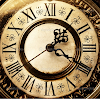A Colorful Guide: Decoding the Stripes on Trains
Trains are a vital part of our transportation network, carrying millions of passengers across vast distances. But have you ever stopped to wonder about the colorful stripes adorning some train coaches? These seemingly simple markings hold a significant purpose, acting as a visual language for passengers. This article delves into the world of train stripes, exploring their function, the information they convey, and their variations across different regions.
From Confusion to Clarity: The Need for Train Stripes
Imagine a bustling train station – a cacophony of announcements, hurried footsteps, and a sea of unfamiliar faces. Identifying the right coach for your ticket can be a daunting task, especially for first-time travelers. Train stripes come to the rescue in such situations, providing a quick and easy way to differentiate between various coach types.
These stripes function similarly to traffic signals or road signs. They offer a standardized visual code that transcends language barriers, ensuring clear communication for passengers of all backgrounds. This is particularly beneficial in countries with diverse populations and widespread train networks.
A Breakdown of the Stripes: What Each Color Signifies
The specific meaning of train stripes can vary depending on the region and railway system. However, some general color schemes are followed in many places. Here's a breakdown of some commonly used stripes and their corresponding meanings:
-
White or Pale Yellow Stripes: These stripes, typically painted on blue coaches, signify general, unreserved compartments. This is the most common coach type, and passengers can board without prior reservation.
-
Yellow Diagonal Stripes: These stripes often indicate coaches designated for differently-abled passengers or those requiring medical attention. The bright yellow color enhances visibility, making it easier for those needing assistance to locate these compartments.
-
Green Stripes: In some local train networks, particularly in India, green stripes signify coaches reserved specifically for women. This promotes a sense of security and comfort for female passengers.
-
Red Stripes: Red stripes can hold different meanings depending on the context. In some cases, they might denote first-class compartments, offering a higher level of amenities. On specific train types, red might indicate a specific category of service, such as the Rajdhani or Shatabdi trains in India, known for their higher speeds and amenities.
It's important to remember that these are just general examples. Always consult information specific to your railway system for the most accurate interpretation of stripe colors.
Beyond Stripes: A Look at Additional Color Coding
Train colors themselves can also convey information. For instance, some high-speed trains might be painted entirely in a specific color, like red or blue, to distinguish them from regular trains. This allows passengers to easily identify the train type and make informed decisions about boarding.
A Global Perspective: Variations in Train Stripe Coding
While the concept of using stripes for train classification is widespread, the specific color codes can differ across countries and continents. Here's a glimpse into some variations:
-
India: The Indian Railways utilize a vibrant stripe system, with white or yellow stripes for general coaches, yellow stripes for disabled passengers, and green stripes for women's compartments. Red stripes might indicate first class or a specific train category.
-
Europe: In many European countries, the overall color of the train often signifies the type of service. For example, high-speed trains might be painted red or blue, while regional trains might have a different color scheme. Stripes might be used for additional information, but the color of the train itself plays a more prominent role.
-
Japan: The Japan Railways system employs a color-based coding system for different train lines and services. For instance, the Shinkansen bullet trains are known for their distinct bullet-shaped body and specific color schemes depending on the line.
Understanding these variations highlights the importance of checking information specific to your railway system when traveling internationally.
The Evolution of Train Stripes: A Reflection of Changing Needs
Train stripes have evolved over time, reflecting the changing needs and demographics of train passengers. In the past, stripes might have primarily distinguished between smoking and non-smoking compartments. Today, with the decline of smoking on trains, stripes have taken on new roles, such as indicating accessibility features or reserved compartments for women.
As passenger needs continue to evolve, we can expect train stripe coding systems to adapt as well. The incorporation of new symbols or color combinations alongside stripes might be implemented to provide even clearer communication for passengers.
Beyond Functionality: The Visual Appeal of Train Stripes
Train stripes are not just about functionality; they also add a touch of vibrancy to often monotonous train exteriors. The use of bold colors can make trains more visually appealing, especially for children or those unfamiliar with train travel. A well-designed stripe scheme can contribute to the overall identity of a railway system, making it more recognizable and memorable.












0 Comments